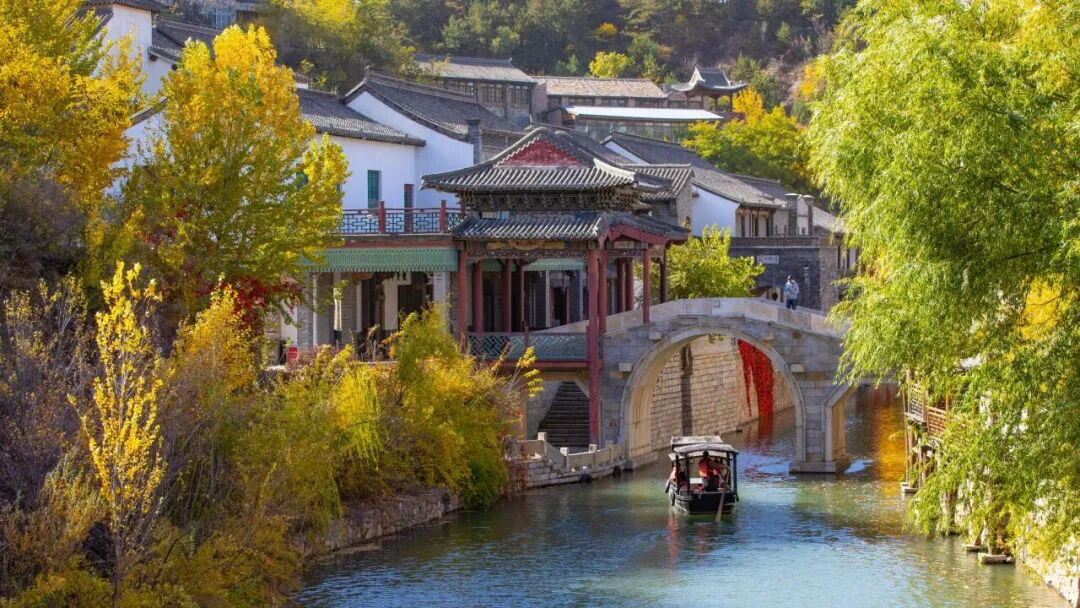This year marks the centenary of the founding of the Communist Party of China. The Beijing Municipal Bureau of Culture and Tourism has officially launched 10 boutique red tourism routes for citizens to explore red tourism resources and relive red memories. This article recommends the journey of recalling Chinese revolutionary pioneers: Li Dazhao's former residence, Li Dazhao Martyr Cemetery, and Babaoshan Revolutionary Cemetery.
Li Dazhao's Former Residence carries the vital individual memory and collective memory of the Chinese revolution. The theme of the new exhibition of Li Dazhao Martyr Cemetery is "Immortal Meritorious Work - Li Dazhao's Life Story Exhibition", which fully shows the glorious life of Li Dazhao. The overall design of Babaoshan Revolutionary Cemetery is based on grassland and takes "red spirit" as the theme, aiming at comforting the lost heroes, encouraging the new strength, keeping the dedication alive, and inheriting the spirit from generation to generation.
Li Dazhao’s Former Residence
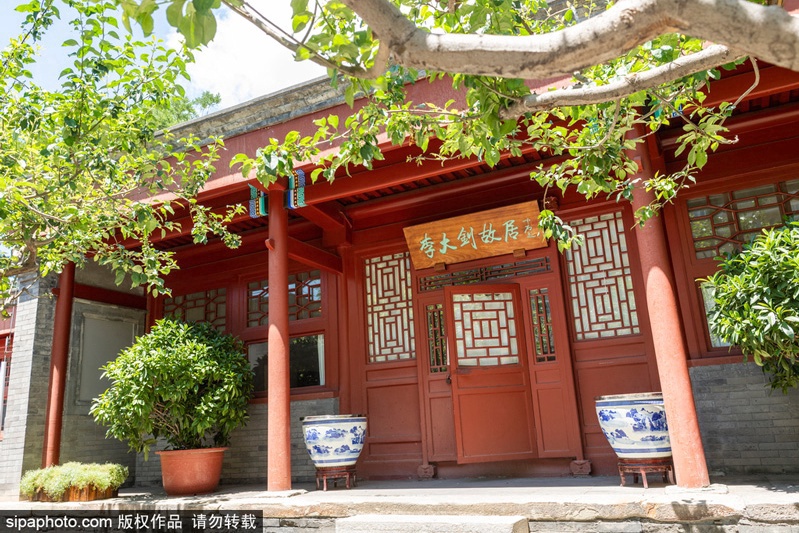
During his work at Peking University, Li Dazhao lived at No.24 Wenhua Hutong in Xicheng District from the spring of 1920 to January of 1924. At that time, the place was called No.35 Houzhai (back courtyard) of Shifuma Street. This courtyard is a small three-in-one courtyard, covering an area of about 550 square meters, with 3 north rooms, 2 east and west appentices, and 3 east and west wing rooms. Among them, the east one of the north rooms is Li Dazhao's bedroom, the east appentice is the eldest daughter Li Xinghua's bedroom, the north one of the east wing rooms is the eldest son Li Baohua's bedroom, the south one is the guest room, and the west wing room is Li Dazhao's study.

During his stay here, Li Dazhao studied and summarized Marxist thought and historical materialism theory. For example, during this period, he wrote and published the article The Value of Historical Materialism in Modern Historiography. The speech of Marx's Economic Theory was also written during this period.
The advanced revolutionary theory urged Li Dazhao, as a pioneer of proletarian revolution, to start practicing. While living at No.35, Houzhai, Shifuma Street, Li Dazhao planned and established the early Communist Party organization in Beijing, and participated in the preparation of the founding process of the Communist Party of China. In October 1920, the early Communist Party organization in Beijing was formally established in Li Dazhao's office of Peking University Library, which was named "Communist Party Group". By the end of 1920, the Communist Party of Beijing had organized and established the Beijing Branch of the Communist Party, with Li Dazhao as its secretary.
Li Dazhao also led the workers and students movement in northern China during this period. In July 1921, the First National Congress of the Communist Party of China was held in Shanghai, but Li Dazhao did not attend because he was leading the wage struggle of Beijing education circles. Li Dazhao was the leader of the Northern Party Organization of the Communist Party of China at that time, and was also the commander-in-chief of the Northern Workers' Movement. At this time, Li Dazhao participated in the Workers' Weekly, and in October 1921, it became the party newspaper of the Northern District Committee of the Communist Party of China and the organ newspaper of the Northern Branch of the Chinese Labor Union Secretariat, which played an important role in promoting the northern workers' movement. In addition, Li Dazhao also led the struggle against feudal warlords, and led to the first cooperation between the Kuomintang and the Communist Party.
At that time, many young people had stayed at Li Dazhao's home and felt the care and instruction of him. Some important meetings of the Northern Party Organization of the Communist Party of China were held in Li Dazhao's study. In addition to this place, Li Dazhao also settled in many places in Beijing, including Beijing Legation Quarter and No.3 Tonghuangzi Hutong in Xuanwumen. In the spring of 1924, after attending the First National Congress of the Kuomintang, Li Dazhao returned to Beijing from Guangzhou. Because he had been persecuted by the reactionary government before, he had to move from the Houzhai of Shifuma to join his family who had moved to No.3 Tonghuangzi Hutong.
Since then, Li Dazhao has moved to Qiuzu Hutong, No.3 Chaoyangli of Houkeng. Therefore, Li Dazhao's former residences in Beijing are now generally considered to be five places, of which No.35, Houzhai of Shifuma (now No.24 Wenhua Hutong) is the most famous.
For Li Dazhao, who worked and lived in Beijing, his place of residence has special commemorative significance. Especially, No.24 Wenhua Hutong, which is the former residence of Li Dazhao and is open to visitors, bears the vital individual memory and collective memory of the Chinese revolution. On June 1, this year, Li Dazhao's former residence was officially opened to the public after being promoted by the exhibition arrangement.
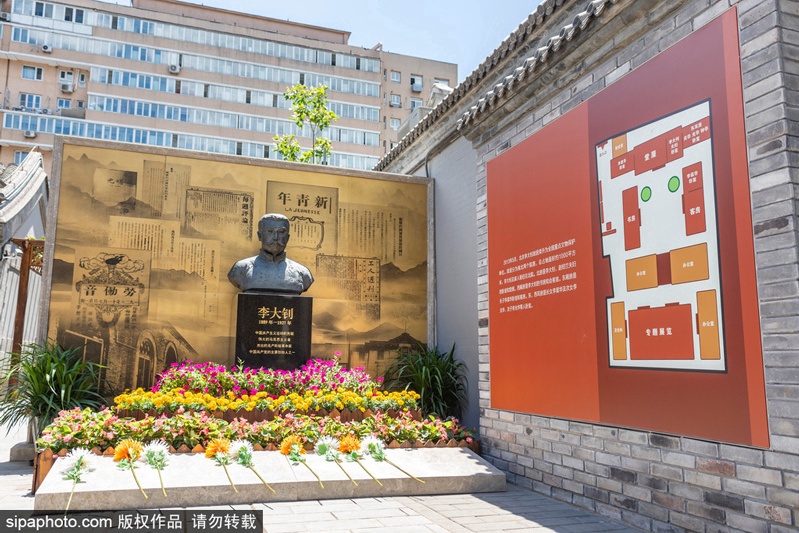
Address: No.24 Wenhua Hutong, Xicheng District, Beijing
Li Dazhao Martyr Cemetery
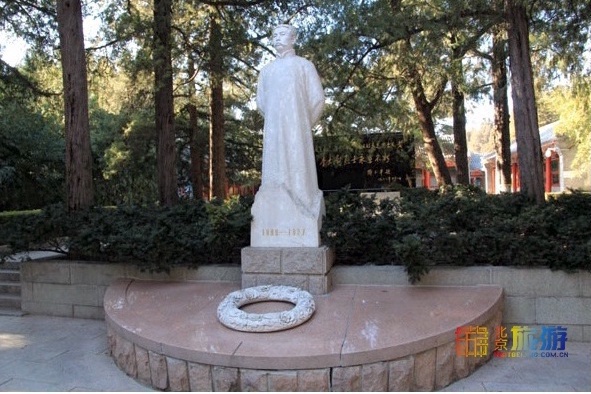
On June 1st, Li Dazhao Martyr Cemetery was reopened with the theme of "Immortal Meritorious Work - Exhibition of Li Dazhao's Life Story", which fully displayed the glorious life of Li Dazhao Martyr.
Li Dazhao Martyr Cemetery, located in Wan’an Cemetery at the foot of Xiangshan Mountain in Haidian District, is a garden within garden, covering an area of 2,200 square meters. It was built on October 29, 1983 - the 94th anniversary of Li Dazhao's birth.
Stepping into the cemetery, you will see a white marble statue of Li Dazhao, followed by the tomb of Li Dazhao and his wife, and behind the tomb is the blue granite monument. The inscription written by Comrade Deng Xiaoping is inscribed on the front of the monument, and the inscription written by the Central Committee of the Communist Party of China is on the back.
From the monument to the exhibition room, on the 20-meter-long road, eight special floor tiles with black characters on a gold background are evenly inlaid in the middle. Through eight time and position information, Li Dazhao's glorious life is highly summarized.
The exhibition room is a courtyard surrounded on three sides, with an exhibition of revolutionary deeds of Li Dazhao martyr. The exhibition is divided into two areas: the main exhibition room "Immortal Meritorious Work - Li Dazhao's Life Story Exhibition", and the memorial room "Forever Model". Among them, the main exhibition room covers an area of 277 square meters, and the contents of the exhibition are divided into "Faith and Doctrine: the First Person to Spread Marxism in China", "Mission and Responsibility: One of the Main Founders of the Communist Party of China", and "Revolution and Dedication: Pioneer of the Chinese Communist Movement". The memorial room covers an area of 68 square meters, which mainly displays the construction of Li Dazhao Martyr Cemetery and the activities of the party, the state and all sectors of society to commemorate Li Dazhao after the public burial of Li Dazhao in 1933, especially since the reform and opening up.
The main forms of the exhibition are pictures, exhibits, original quotations and videos. There are 272 pictures and 89 exhibits, as well as 5 sets of multimedia interactive exhibitions and 2 sets of scenes.
Walking into the exhibition hall, you will see a huge hand-painted floating wall in front of you, with a bust of Li Dazhao in the middle, and the background is the rolling hills of Wufeng Mountain in Changli, Hebei Province. Five pictures are selected on both sides, namely, "writing for New Youth", “giving a speech on ‘The Victory of the Common People’”, "participating in the May Fourth Movement", "founding the Communist Party of China" and "leading the Beijing-Hankou Railway Strike", which highly summarize the important stages of Li Dazhao's life.
There are many new exhibits in the exhibition room, such as the only video image left by Li Dazhao before his death - the video of his speech at the National Grand Theatre in Moscow in September 1924, and the "photo of Li Dazhao before his death" taken by Dutch journalists, which was found from the National Archives of the Netherlands in 2011, which was exhibited in Li Dazhao Martyr Cemetery for the first time. The re-exhibition also copied two oil paintings related to Li Dazhao by 3D printing, one is "West Lake Conference" kept in the memorial hall of the Second Congress of the Communist Party of China in Shanghai, and the other is "Sun Yat-sen Meeting with Li Dazhao" kept in the memorial hall of Sun Yat-sen's former residence in Shanghai.
The new exhibition also shows the page of Youth published by Li Dazhao in New Youth with ice screen. The 26,000-word My Marxist View was displayed on the electronic screen, and the audience could read it page by page. 3D photos are used to show the site of the First Congress of the Communist Party of China. The exhibition also produced a 15-minute video clip for Self-report in Prison by using various literature materials.
In the Martyr Cemetery, a physical bookstore "Youth Bookstore" is set up to gather books about Li Dazhao and red party history books, develop related cultural and creative products, organize cultural activities, and spread red culture.

Address: No.1 Wan’anli, Xiangshan East, Haidian District, Beijing.
Tel: 010-62591044
Transportation: Take Xijiao Sightseeing Line and Bus No.630 to Wan’an Station. There is a parking lot at the gate.
Note: advance reservation is required for sweeping activities and visiting exhibitions. The maximum daily reception capacity is 800, and the instantaneous reception capacity in the exhibition room is 50 .
Babaoshan Revolutionary Cemetery
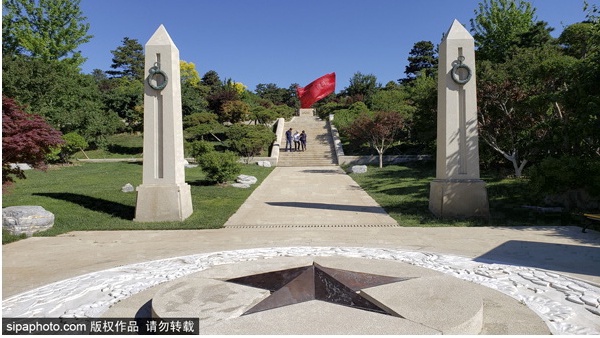
After five years and more than a dozen revisions and improvements, the construction of the memorial garden and the relocation of martyrs' ashes were completed in June 2019. The Babaoshan Revolutionary Cemetery integrates cemetery and park, whose overall design is based on grassland and takes "red spirit" as the theme, aiming to comfort the lost heroes, encourage the new strength, keep the dedication alive, and pass on the spirit from generation to generation.
The Martyrs Memorial Park is divided into three areas, namely, the Achievement and Monument Area, the Spark Succession Area, and the Permanent Glory Area. There is a small square and a group of theme sculptures in the center of the north side, which are used for holding ceremonies and family sweeping when burying martyrs. There are red flag sculptures in the center of the square and large group landscape sculptures around the square, which highlight the glorious image of revolutionary martyrs, symbolize the inheritance of the mission of "defending the country" from the past to the future, and place a good wish for national rejuvenation and prosperity.
Tombstones in the Martyrs Memorial Park of Babaoshan Revolutionary Cemetery represent loyalty to the Party. It is the martyrs who sacrifice themselves for a beautiful home and happy life for us today. We should cherish the memory of the martyrs, remember the history, and inherit the glorious tradition of the revolutionary martyrs, so as to build the motherland stronger.
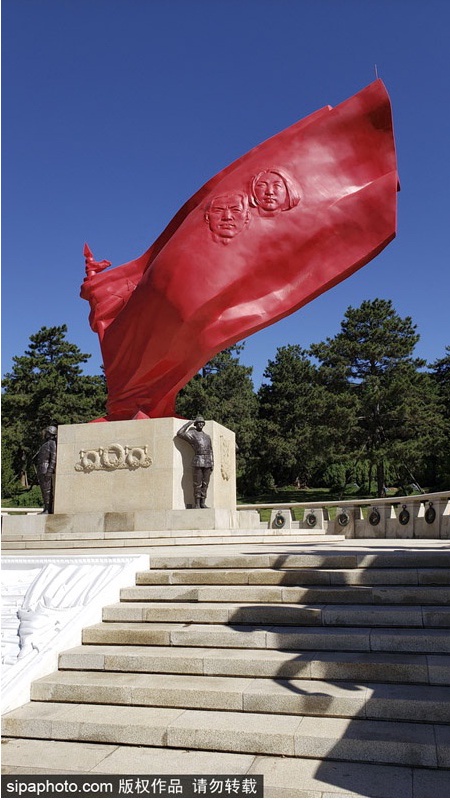
Address: No.9 Shijingshan Road, Shijingshan District, Beijing


